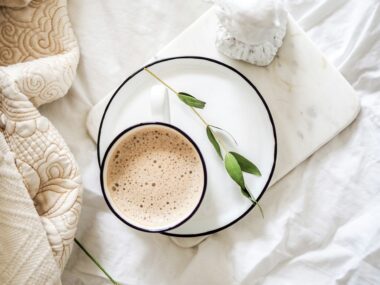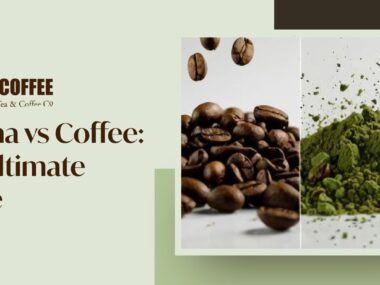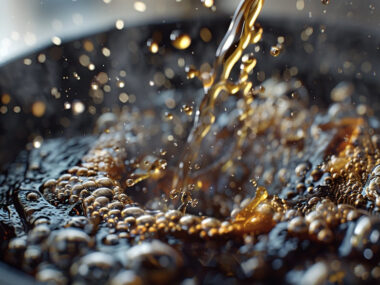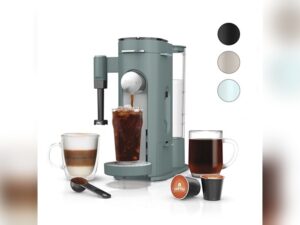Medium to coarse ground coffee extracts rich flavors and creates a full-bodied brew. If you’re wondering what type of coffee is best for French press, this guide has the answer.
French press coffee is loved for its robust taste and simple brewing process. Choosing the right coffee enhances this experience, bringing out the best flavors. Different coffees offer unique tastes, making selection important. From bold blends to delicate single origins, each type contributes to the final flavor.
The grind size also matters, affecting extraction and taste. Medium to coarse grounds work well, allowing the coffee to bloom without over-extraction. Understanding these factors helps in making the perfect cup. Whether you prefer rich, nutty notes or fruity, bright tones, there’s a coffee type for every palate. Discovering the best choice can transform your French press experience.

Credit: www.nytimes.com
Coffee Bean Varieties
Choosing the right coffee beans is key to making the perfect French press coffee. Different beans offer distinct flavors and characteristics, making your coffee experience richer. Understanding the varieties of coffee beans can help you decide which is the best fit for your French press. Let’s explore the two main types of coffee beans and the options of single origin vs. blends.
Arabica Vs. Robusta
When selecting coffee beans for your French press, the choice often boils down to Arabica and Robusta beans. These two types dominate the coffee market but have unique differences.
Arabica beans are known for their smooth and complex flavors. These beans are more delicate and grow at higher altitudes. They often have a wide range of tastes, from sweet and fruity to nutty and chocolaty. Arabica beans also have less caffeine compared to Robusta.
On the other hand, Robusta beans are stronger and have a more bitter taste. These beans are hardier and can grow at lower altitudes. The flavor profile is often described as earthy and woody, with a thicker crema. Robusta beans contain higher caffeine content.
Here is a comparison table for a clearer view:
| Aspect | Arabica | Robusta |
|---|---|---|
| Flavor | Sweet, Fruity, Nutty | Bitter, Earthy, Woody |
| Altitude | High | Low |
| Caffeine | Low | High |
For a French press, many coffee enthusiasts prefer Arabica beans for their rich and subtle flavors. But, if you enjoy a stronger coffee, Robusta might be your go-to.
Single Origin Vs. Blends
The choice between single origin and blends is another important factor in your French press coffee. Each offers unique benefits and experiences.
Single origin coffee comes from one specific region or country. This type of coffee captures the unique flavors and characteristics of its origin. You might taste notes specific to that region, whether it’s fruity, floral, or spicy.
Here are some benefits of single origin coffee:
- Distinct and unique flavors
- Transparency in sourcing
- Higher quality and more traceable
Blends combine beans from different regions. These are crafted to create a balanced and consistent flavor profile. Blends can be smooth and well-rounded, making them a popular choice for many.
Benefits of blended coffee include:
- Balanced and consistent flavors
- Versatility in brewing methods
- Availability and often more affordable
Choosing between single origin and blends depends on what you value more – unique, region-specific flavors or a balanced, consistent cup. Both can be excellent in a French press, enhancing your coffee experience.
Grind Size Matters
The French Press is a classic and beloved coffee brewing method. One key aspect that influences the quality of your brew is the grind size of your coffee beans. The grind size can dramatically affect the flavor, texture, and overall experience of your cup. Let’s explore why grind size matters and how to get it right for your French Press.
Coarse Grind Benefits
Using a coarse grind is essential for French Press coffee. The larger coffee particles allow for optimal water flow and extraction. Here are some key benefits:
- Better Flavor: Coarse grinds prevent over-extraction, which can make your coffee taste bitter. Instead, you get a balanced and rich flavor.
- Reduced Sediment: Larger grounds are less likely to slip through the metal filter of the French Press, resulting in a cleaner cup.
- Consistent Extraction: Coarse grinds ensure that water reaches all coffee particles evenly, providing a uniform taste.
| Grind Size | Benefits |
|---|---|
| Coarse | Rich flavor, less sediment, consistent extraction |
Aiming for a grind size similar to coarse sea salt can be a good visual guide. This size allows the full flavor profile of the beans to shine through without unwanted bitterness. Remember, a coarse grind leads to a satisfying and enjoyable coffee experience.
Avoiding Fine Grind
Avoiding a fine grind is crucial for French Press coffee. Fine grounds can cause several issues:
- Over-Extraction: Fine grinds expose more surface area to water, leading to over-extraction and a bitter taste.
- Increased Sediment: Smaller particles can slip through the metal filter, resulting in a muddy cup.
- Difficulty in Pressing: Fine grinds can clog the filter, making it hard to press down the plunger.
| Grind Size | Drawbacks |
|---|---|
| Fine | Bitter taste, more sediment, harder to press |
Using a grind size that is too fine can turn your French Press experience into a less enjoyable one. It can make the coffee taste overly strong and leave an unpleasant residue in your cup. Stick to a coarser grind to avoid these issues and enjoy a smooth, flavorful coffee.
Flavor Profiles
The French press is a popular method to brew coffee, allowing you to enjoy rich flavors and aromas. The type of coffee you choose can greatly affect the taste of your brew. Understanding the flavor profiles of different coffees can help you find the perfect match for your French press. Let’s explore two main flavor profiles: Fruity and Floral Notes, and Nutty and Chocolatey Flavors.
Fruity And Floral Notes
Coffees with fruity and floral notes offer a bright and vibrant flavor. These flavors are often found in light to medium roast coffees. They can be enjoyed by those who prefer a refreshing and lively cup. Here are some key points to consider:
- Origin: Coffees from Africa, such as Ethiopian and Kenyan beans, often have fruity and floral notes.
- Roast Level: Light to medium roasts preserve the delicate flavors and aromas.
- Tasting Notes: Look for descriptions like berry, citrus, jasmine, or floral in the tasting notes.
Here’s a table showing some popular coffees with fruity and floral notes:
| Origin | Flavor Notes |
|---|---|
| Ethiopia | Blueberry, Jasmine, Citrus |
| Kenya | Blackberry, Lemon, Floral |
| Colombia | Tropical Fruits, Orange, Floral |
Choosing a coffee with these characteristics can provide a refreshing and complex brew. Perfect for those who enjoy a lighter and more aromatic cup.
Nutty And Chocolatey Flavors
Coffees with nutty and chocolatey flavors offer a rich and comforting taste. These flavors are commonly found in medium to dark roast coffees. Ideal for those who prefer a smooth and indulgent cup. Consider the following:
- Origin: Coffees from Central and South America, such as Brazilian and Guatemalan beans, often have nutty and chocolatey notes.
- Roast Level: Medium to dark roasts enhance the richness and depth of these flavors.
- Tasting Notes: Look for descriptions like chocolate, nut, caramel, or toffee in the tasting notes.
Here’s a table showing some popular coffees with nutty and chocolatey flavors:
| Origin | Flavor Notes |
|---|---|
| Brazil | Chocolate, Nut, Caramel |
| Guatemala | Cocoa, Nutmeg, Brown Sugar |
| Sumatra | Dark Chocolate, Earthy, Spices |
Opting for a coffee with nutty and chocolatey flavors can result in a rich and satisfying brew. Perfect for those who enjoy a full-bodied and comforting cup.
Roast Levels
Choosing the right coffee for your French Press can be a game-changer. One key factor is the roast level of the coffee beans. Roast levels impact the flavor, aroma, and overall experience of your coffee. Understanding these differences can help you select the best beans for your French Press.
Light Roast Characteristics
Light roast coffee beans are known for their bright, tangy flavors. They are roasted for a shorter time, retaining more of the beans’ original qualities. Here are some key characteristics of light roast coffee:
- Flavor Profile: Light roasts often have fruity, floral, or citrus notes. They offer a crisp and clean taste.
- Acidity: Higher acidity, giving a lively and vibrant cup.
- Body: Light body, resulting in a less heavy mouthfeel.
- Color: Light brown, with no oil on the surface.
Light roast coffee works well in a French Press if you enjoy a more nuanced and complex flavor. The French Press method can highlight these subtle flavors without overpowering them.
Consider the following points when choosing light roast coffee for your French Press:
- Use fresh, high-quality beans to ensure the best flavor.
- Grind the beans coarsely to avoid over-extraction.
- Experiment with different origins to find your preferred flavor profile.
Light roasts might not be for everyone, especially if you prefer a bolder, richer taste. But for those who appreciate delicate flavors, light roast coffee can be a delightful choice.
Dark Roast Insights
Dark roast coffee beans are roasted longer, resulting in a deeper, bolder flavor. They are often favored for their rich and robust taste. Here are some key characteristics of dark roast coffee:
- Flavor Profile: Dark roasts often have chocolate, caramel, or smoky notes. They offer a bold and intense taste.
- Acidity: Lower acidity, providing a smoother and more mellow cup.
- Body: Full body, resulting in a heavier mouthfeel.
- Color: Dark brown to black, with oil visible on the surface.
Dark roast coffee is a great option for the French Press if you enjoy a strong, full-bodied cup. The French Press method can enhance the richness and depth of dark roast coffee.
Consider the following points when choosing dark roast coffee for your French Press:
- Use fresh, high-quality beans to ensure the best flavor.
- Grind the beans coarsely to avoid over-extraction.
- Experiment with different origins to find your preferred flavor profile.
Dark roasts are perfect for those who enjoy a bold and robust cup of coffee. They provide a rich, satisfying experience that pairs well with the French Press method.
Freshness And Storage
Choosing the best coffee for a French press is crucial to enjoying a rich and flavorful brew. Freshness and storage play an essential role in maintaining the quality of your coffee. Proper handling ensures that your coffee retains its aroma and taste, offering you the best French press experience.
Importance Of Fresh Beans
Using fresh beans can make a huge difference in your French press coffee. Fresh beans contain more oils and flavors, which enhance the coffee’s taste. Here are some key points to consider:
- Aroma: Fresh beans have a strong, pleasant aroma. Stale beans lose this quality.
- Flavor: Fresh beans provide a richer, more complex flavor profile. Older beans taste flat.
- Oils: Fresh beans retain essential oils, which contribute to a fuller body and mouthfeel.
To ensure you’re using fresh beans, consider the following tips:
- Buy whole beans instead of pre-ground coffee. Whole beans stay fresh longer.
- Check the roast date on the package. Aim to use the beans within two weeks of roasting.
- Purchase from local roasters or reputable sources to guarantee freshness.
Best Storage Practices
Proper storage is vital to maintaining the freshness of your coffee beans. Here are some best practices to follow:
- Airtight Containers: Use airtight containers to keep oxygen out. Oxygen causes beans to stale faster.
- Cool, Dark Place: Store beans in a cool, dark place. Heat and light can degrade the quality of the beans.
- Avoid Moisture: Keep beans away from moisture. Moisture can cause mold growth and spoil the beans.
A table summarizing the best storage practices:
| Storage Factor | Recommendation |
|---|---|
| Airtight Container | Yes |
| Cool, Dark Place | Yes |
| Avoid Moisture | Yes |
By following these storage tips, you can ensure that your beans remain fresh and flavorful. This will enhance your French press coffee experience, providing you with a perfect cup every time.
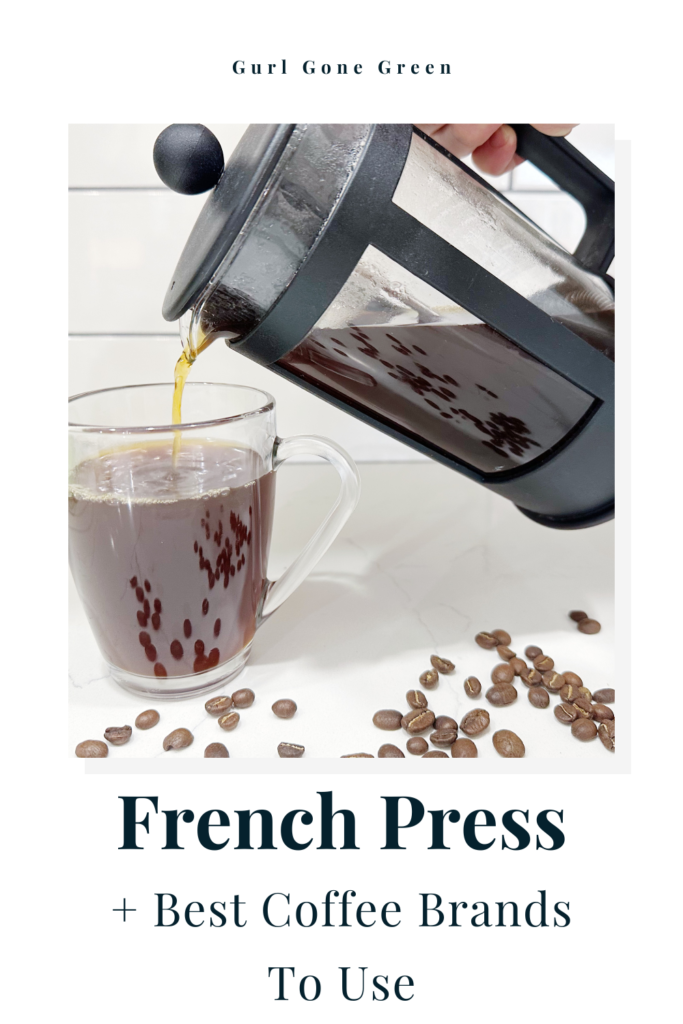
Credit: gurlgonegreen.com
Brewing Techniques
Using a French press to brew coffee brings out rich, full flavors. The right techniques make a big difference in your cup. Choosing the best type of coffee for French press involves more than just the beans. The brewing techniques also play a crucial role. Let’s dive into the specifics.
Water Temperature Tips
Getting the water temperature right is crucial for a perfect French press coffee. The ideal range is between 195°F and 205°F (90°C – 96°C). Too hot, and you risk burning the coffee, leading to a bitter taste. Too cold, and the coffee will be under-extracted, resulting in a weak flavor.
Here are some tips to achieve the perfect water temperature:
- Use a thermometer: This ensures you hit the sweet spot every time. Digital thermometers are easy to use and very accurate.
- Boil and wait: Boil the water and let it sit for about 30 seconds to cool down to the right temperature.
- Preheat the French press: Pour hot water into the French press and let it sit for a minute. This stabilizes the temperature when you add the coffee and water.
Maintaining the right water temperature ensures your coffee extracts properly, giving you a balanced and flavorful cup.
Brewing Time Recommendations
The brewing time for French press coffee is also essential. The standard recommendation is four minutes. This allows the coffee grounds to steep fully, extracting the rich flavors you desire. Here’s a step-by-step guide:
- Add coffee grounds: Use a coarse grind to avoid over-extraction and a gritty texture.
- Pour in water: Use water that’s between 195°F and 205°F.
- Stir the mixture: Stir gently to ensure all grounds are saturated.
- Place the lid: Put the lid on with the plunger pulled all the way up.
- Wait for four minutes: Let the coffee steep to extract the flavors fully.
- Press the plunger: Do it slowly and evenly to separate the grounds from the brewed coffee.
Adjusting the brewing time slightly can help you find your perfect cup. If the coffee tastes too strong, reduce the time by 30 seconds. If it’s too weak, add 30 seconds. The goal is a balanced cup that suits your taste.
Accessories And Tools
When brewing coffee with a French press, the right accessories and tools can make all the difference. Choosing the right French press and essential coffee tools ensures a perfect cup every time. Proper equipment helps you extract the best flavors from your coffee beans.
Choosing The Right French Press
Picking the right French press is crucial for a great coffee experience. Here are some factors to consider:
- Material: French presses are made from glass, stainless steel, or plastic. Glass offers a classic look but can break easily. Stainless steel is durable and keeps your coffee hot longer. Plastic is lightweight and affordable but might affect the taste.
- Size: French presses come in various sizes, from single-serve to large carafes. Choose a size that matches your daily coffee consumption. A 34-ounce press is suitable for multiple cups, while an 8-ounce press is perfect for personal use.
- Filter: A fine mesh filter ensures a smooth cup of coffee. Some French presses come with double filters for extra clarity. Ensure the filter is easy to clean and replace if needed.
- Design: Look for a French press with an ergonomic handle and a sturdy base. A well-designed press is easier to use and less likely to tip over.
Here is a comparison table for quick reference:
| Material | Durability | Heat Retention | Price |
|---|---|---|---|
| Glass | Low | Moderate | Medium |
| Stainless Steel | High | High | High |
| Plastic | Moderate | Low | Low |
Essential Coffee Tools
Having the right tools enhances your French press coffee experience. Here are some must-have items:
- Coffee Grinder: A burr grinder ensures a consistent grind size. Freshly ground beans taste better than pre-ground coffee. Choose a grinder with adjustable settings for coarse grinding.
- Scale: A digital scale helps measure coffee and water accurately. The ideal ratio is 1:15, meaning 1 gram of coffee for every 15 grams of water. Precision ensures the perfect brew strength.
- Kettle: Use a gooseneck kettle for better control over pouring. Boil water to about 200°F (93°C) for optimal extraction. A kettle with a thermometer is helpful for maintaining the right temperature.
- Timer: Brewing time affects flavor. Steep your coffee for 4 minutes for a balanced taste. Use a timer to ensure consistent results.
- Stirrer: A wooden or plastic stirrer helps mix the coffee grounds with water evenly. Avoid metal stirrers as they can break the glass.
Here is a checklist for your French press coffee setup:
- French Press
- Burr Grinder
- Digital Scale
- Gooseneck Kettle
- Timer
- Stirrer
With these tools, you can enjoy a rich and flavorful French press coffee every day.
Common Mistakes
Brewing coffee using a French Press can be a delightful experience, but it requires attention to detail. The type of coffee you use is crucial, and avoiding common mistakes is essential for a perfect cup. Let’s explore some common mistakes people make while using a French Press.
Over-extraction Issues
Over-extraction occurs when coffee grounds are in contact with water for too long. This can result in a bitter, unpleasant taste. Here are some tips to avoid over-extraction:
- Use Coarse Grounds: French Press coffee demands coarse grounds. Fine grounds can cause over-extraction and create a sludgy texture.
- Monitor Brew Time: The ideal brew time is 4 minutes. Exceeding this can lead to over-extraction. Use a timer to ensure accuracy.
- Water Temperature: Water that’s too hot can cause over-extraction. Aim for a temperature between 195°F and 205°F (90°C to 96°C).
Here’s a table summarizing the key points:
| Factor | Ideal Condition |
|---|---|
| Grind Size | Coarse |
| Brew Time | 4 minutes |
| Water Temperature | 195°F – 205°F (90°C – 96°C) |
By paying attention to these factors, you can prevent over-extraction and enjoy a smoother, more balanced cup of coffee.
Under-extraction Problems
Under-extraction happens when coffee grounds are not in contact with water long enough. This can result in a weak, sour taste. To avoid under-extraction, consider the following:
- Grind Consistency: Ensure your coffee grounds are uniformly coarse. Inconsistent grinds can lead to uneven extraction.
- Correct Brew Time: Stick to the 4-minute brew time. Brewing for less time will cause under-extraction.
- Proper Stirring: Stir the coffee grounds and water mixture after adding water. This helps ensure all grounds are evenly saturated.
Here is a quick reference table:
| Factor | Ideal Condition |
|---|---|
| Grind Size | Uniformly Coarse |
| Brew Time | 4 minutes |
| Stirring | Evenly Stirred |
By focusing on these factors, you can avoid under-extraction and ensure your coffee has a rich, full flavor.
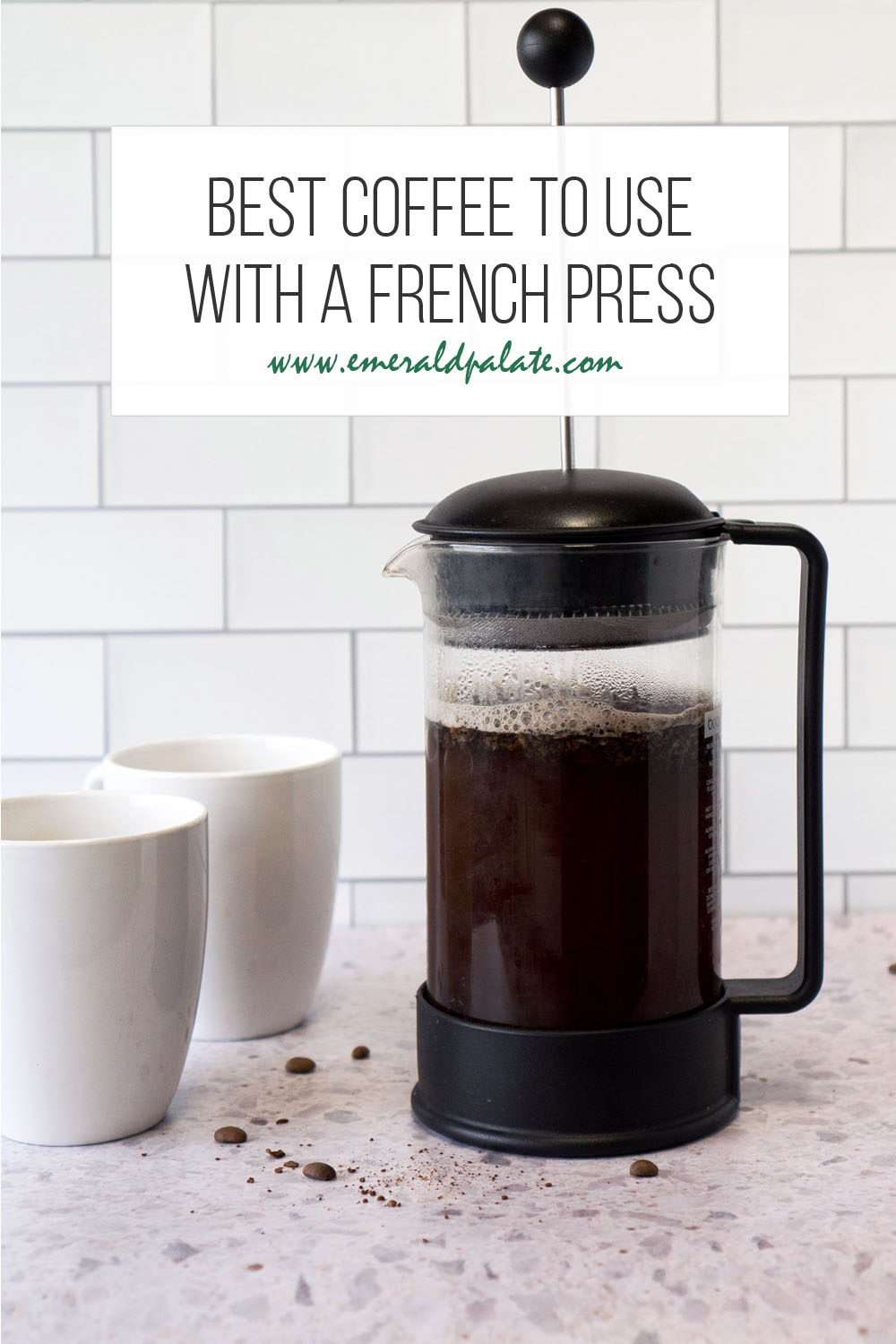
Credit: www.emeraldpalate.com
Frequently Asked Questions
Can I Use Regular Ground Coffee In A French Press?
Yes, you can use regular ground coffee in a French press. Coarser grounds work best to avoid sediment.
What Kind Of Coffee Is Best For A French Press?
Medium to coarse ground coffee is best for a French press. Opt for freshly ground beans for optimal flavor.
What Is So Special About French Press Coffee?
French press coffee is special due to its rich, full-bodied flavor. The brewing method preserves essential oils and compounds. It offers a robust taste and aroma, making it a favorite among coffee enthusiasts. The simple, manual process allows complete control over brewing time and temperature.
What Is The Recipe For The Perfect French Press Coffee?
Use coarsely ground coffee beans. Add 1:15 coffee-to-water ratio. Boil water, let it cool for 30 seconds. Pour over grounds, stir. Steep for 4 minutes, then press slowly. Enjoy!
Conclusion
Choosing the best coffee for your French press matters. Opt for medium to coarse grinds. This type works best with this brewing method. It helps extract the rich flavors. Try different beans until you find your favorite. Freshly ground coffee always enhances the taste.
Remember, the right coffee can make all the difference. Experiment and enjoy each unique cup. Your perfect French press brew is waiting. Happy brewing!

